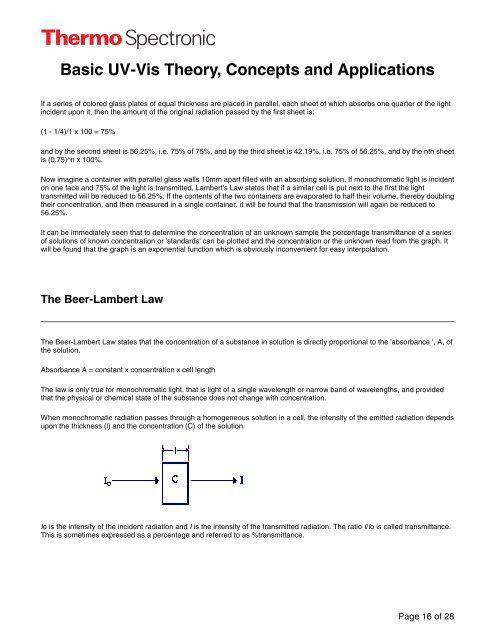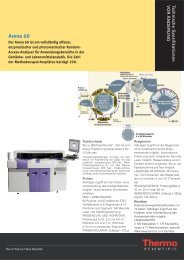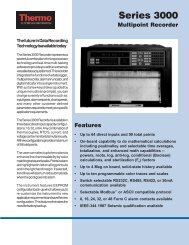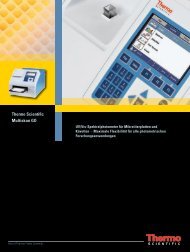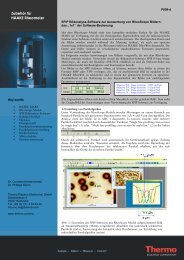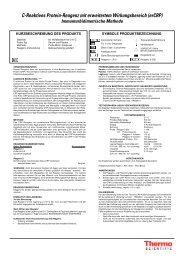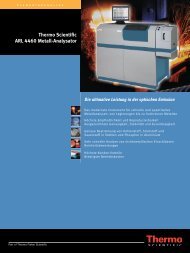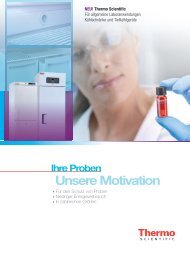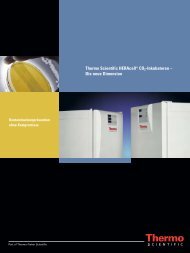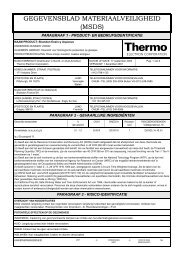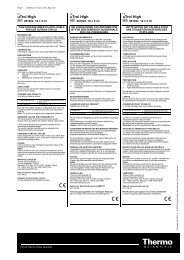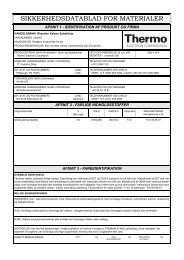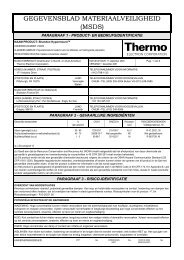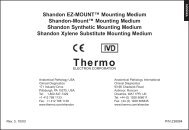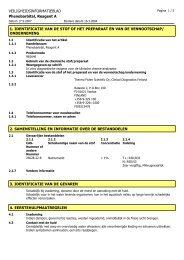Basic UV-Vis Theory, Concepts and Applications
Basic UV-Vis Theory, Concepts and Applications
Basic UV-Vis Theory, Concepts and Applications
You also want an ePaper? Increase the reach of your titles
YUMPU automatically turns print PDFs into web optimized ePapers that Google loves.
<strong>Basic</strong> <strong>UV</strong>-<strong>Vis</strong> <strong>Theory</strong>, <strong>Concepts</strong> <strong>and</strong> <strong>Applications</strong><br />
If a series of colored glass plates of equal thickness are placed in parallel, each sheet of which absorbs one quarter of the light<br />
incident upon it, then the amount of the original radiation passed by the first sheet is:<br />
(1 - 1/4)/1 x 100 = 75%<br />
<strong>and</strong> by the second sheet is 56.25%, i.e. 75% of 75%, <strong>and</strong> by the third sheet is 42.19%, i.e. 75% of 56.25%, <strong>and</strong> by the nth sheet<br />
is (0.75)^n x 100%.<br />
Now imagine a container with parallel glass walls 10mm apart filled with an absorbing solution. If monochromatic light is incident<br />
on one face <strong>and</strong> 75% of the light is transmitted, Lambert's Law states that if a similar cell is put next to the first the light<br />
transmitted will be reduced to 56.25%. If the contents of the two containers are evaporated to half their volume, thereby doubling<br />
their concentration, <strong>and</strong> then measured in a single container, it will be found that the transmission will again be reduced to<br />
56.25%.<br />
It can be immediately seen that to determine the concentration of an unknown sample the percentage transmittance of a series<br />
of solutions of known concentration or 'st<strong>and</strong>ards' can be plotted <strong>and</strong> the concentration or the unknown read from the graph. It<br />
will be found that the graph is an exponential function which is obviously inconvenient for easy interpolation.<br />
The Beer-Lambert Law<br />
The Beer-Lambert Law states that the concentration of a substance in solution is directly proportional to the 'absorbance ', A, of<br />
the solution.<br />
Absorbance A = constant x concentration x cell length<br />
The law is only true for monochromatic light, that is light of a single wavelength or narrow b<strong>and</strong> of wavelengths, <strong>and</strong> provided<br />
that the physical or chemical state of the substance does not change with concentration.<br />
When monochromatic radiation passes through a homogeneous solution in a cell, the intensity of the emitted radiation depends<br />
upon the thickness (l) <strong>and</strong> the concentration (C) of the solution.<br />
Io is the intensity of the incident radiation <strong>and</strong> I is the intensity of the transmitted radiation. The ratio I/Io is called transmittance.<br />
This is sometimes expressed as a percentage <strong>and</strong> referred to as %transmittance.<br />
Page 16 of 28


